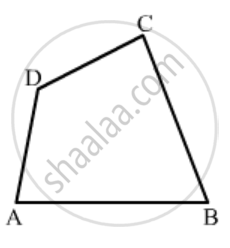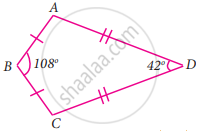Advertisements
Advertisements
Question
In Fig. 16.19, ABCD is a quadrilateral.
Name a pair of opposite angles.

Solution
\[ \text{ (∠A, ∠C) or (∠B, ∠D) } \]
APPEARS IN
RELATED QUESTIONS
What is the sum of the measures of the angels of a convex quadrilateral? Will this property hold if the quadrilateral is not convex? (Make a non-convex quadrilateral and try!)
Complete of the following, so as to make a true statement:
The number of pairs of adjacent angles of a quadrilateral is .......
In Fig. 16.19, ABCD is a quadrilateral.
Name a pair of opposite sides.

ABCD is a trapezium in which AB || DC. M and N are the mid-points of AD and the respectively. If AB = 12 cm, MN = 14 cm, then CD =
In a trapezium ABCD, side AB is parallel to side DC. If ∠A = 78° and ∠C = 120. find angles B and D.
In the quadrilateral ABCD, AB = BC and AD = DC Measure of ∠BCD is
ABCD is a rhombus such that ∠ACB = 40º. Then ∠ADB is ______.
If the sum of two angles is greater than 180°, then which of the following is not possible for the two angles?
The number of right angles in a straight angle is ______ and that in a complete angle is ______.
Using the information given, name the right angles in part of figure:
AC ⊥ CD
